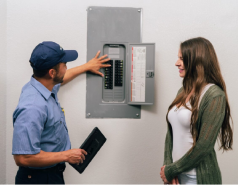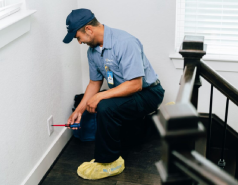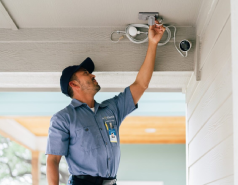Safety outlets are specifically engineered to reduce the risk of electrical shock, fire, and other hazards. These outlets are required in certain areas of the home and offer features that standard outlets do not provide. Their purpose is to prevent accidents before they happen, using built-in mechanisms to respond to abnormal electrical activity or to block unsafe contact.
We install a variety of safety outlets, each with its own purpose and application:
AFCI Outlets
Arc fault circuit interrupter (AFCI) outlets detect arc faults—unexpected electrical discharges that can occur when wires become loose, corroded, or damaged. These discharges are a common cause of electrical fires, especially in older homes or areas with high usage. AFCI outlets monitor circuits for these faults and cut off the power when necessary. Bedrooms, living rooms, and other common areas often require AFCI protection under current building codes.
GFCI Outlets
Ground fault circuit interrupter (GFCI) outlets are a requirement in areas where water is present, such as kitchens, bathrooms, basements, and garages. GFCI receptacles constantly monitor the flow of electricity and will shut off power within milliseconds if they detect an imbalance that could indicate a shock hazard. This fast response helps to prevent serious injuries caused by ground faults.
Outdoor Outlets
Outdoor electrical outlets require special protection from the elements. These outlets are installed with weather-resistant covers and often feature GFCI protection to guard against moisture-related issues. Whether you're powering outdoor lighting, gardening tools, or entertainment equipment, outdoor electrical outlets ensure safe access to power where you need it most.
Tamper-Resistant or Childproof Outlets
Tamper-resistant outlets have shutters built in to them that block foreign objects from being inserted. These outlets are required by code in new homes and provide an added layer of protection for households with young children. They function like regular outlets when used properly with plugs but prevent contact when children attempt to insert items like paper clips, keys, or fingers.













